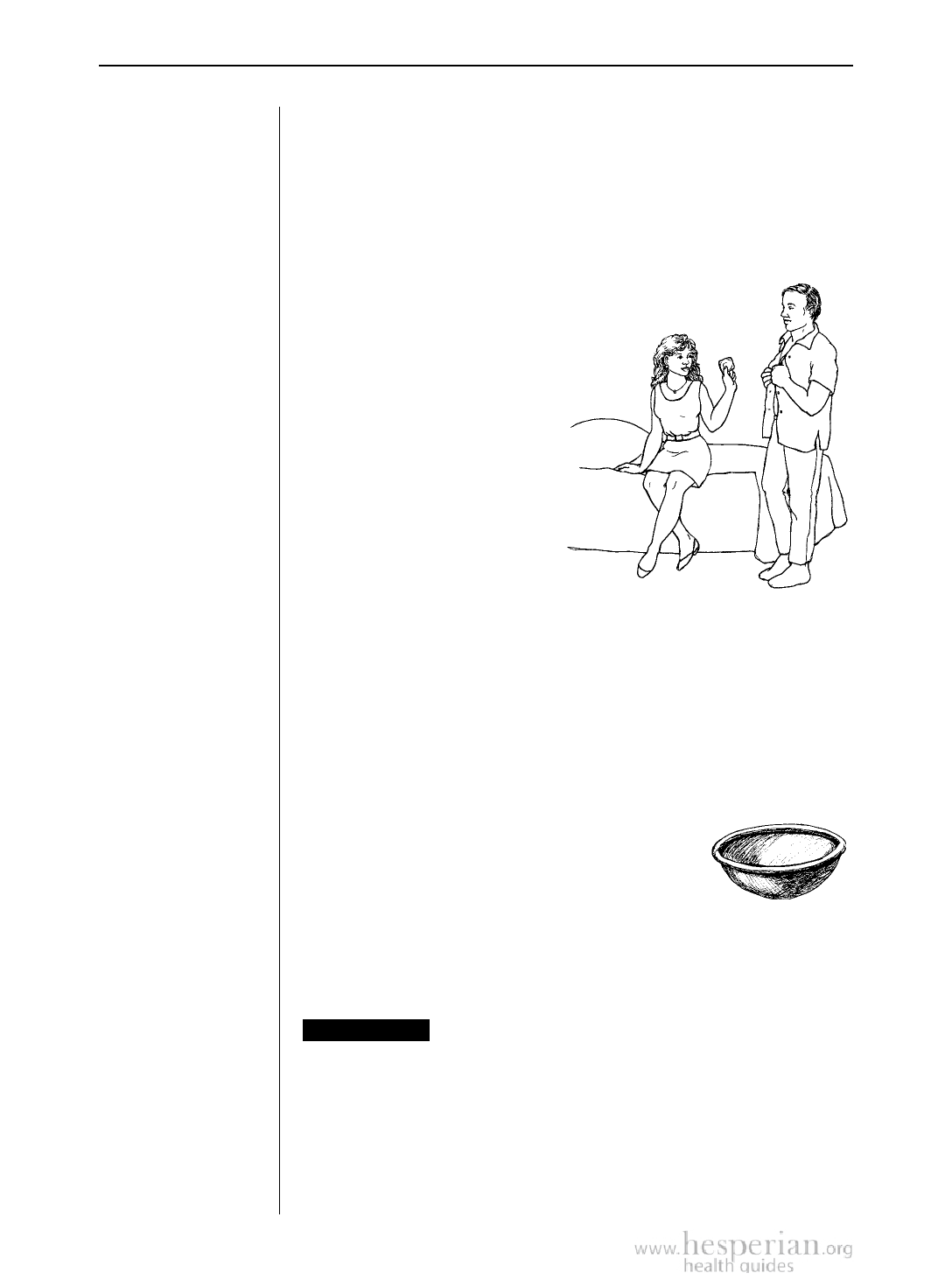
346 Sex Workers
How to
Protect
Yourself
from STIs,
Including
HIV
➤ “If they don’t want
to use a condom, I
ask them if they ever
listen to the news, if
they have ever heard
of AIDS. I tell them
I’m not willing to take
the chance.”
—Jolanda
➤ Protecting
yourself and others
from STIs means
having safer sex
with your clients,
and also with
your husband or
boyfriend.
If you exchange sex for money, housing or other kinds of
support, it is important to protect yourself from STIs and HIV.
For more information, see the section on “Safer Sex” (page 189),
and the chapters on “Sexually Transmitted Infections and Other
Infections of the Genitals” (page 261), and “Family Planning”
(page 197).
Here are some other ideas:
• Use latex condoms every
time you have sex. Make sure
you always have condoms
when you work.
• Hand sex (manual
masturbation), oral
sex, or sex stories
(fantasy), are safer
than sex in your
vagina or anus if you
cannot get a client
to use a condom.
• If you are unable to use a male or female condom (see
pages 202 to 204), using a diaphragm (pages 205 and 206)
will give some protection, though less than a condom. You
can put your diaphragm in before you begin work, in case a
man refuses to use a condom.
To prevent pregnancy, a diaphragm is usually
used with spermicide. But using spermicides
too often can irritate the skin in your
vagina, making it easier for germs to
pass through the skin and infect you
with an STI, especially HIV. Spermicides
used every other day are less likely to
cause irritation. This means that using a
diaphragm
diaphragm with spermicide is not a good
way for most sex workers to prevent pregnancy.
IMPORTANT Do not use chemicals like bleach or detergent
to wash out your vagina. They can cause serious injury!
• Inspect your clients’ genitals for sores or discharge
before you have sex. Refuse to have unprotected sex
with any man who has signs of an STI. Remember you
cannot tell by looking if a person has HIV infection.
Where Women Have No Doctor 2012